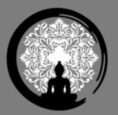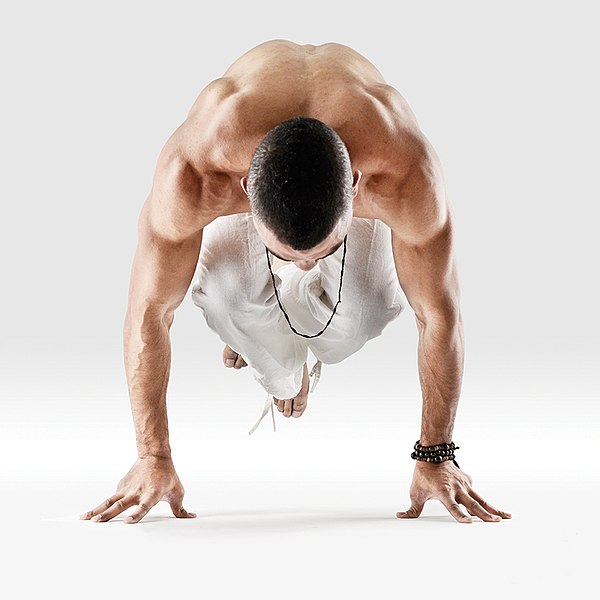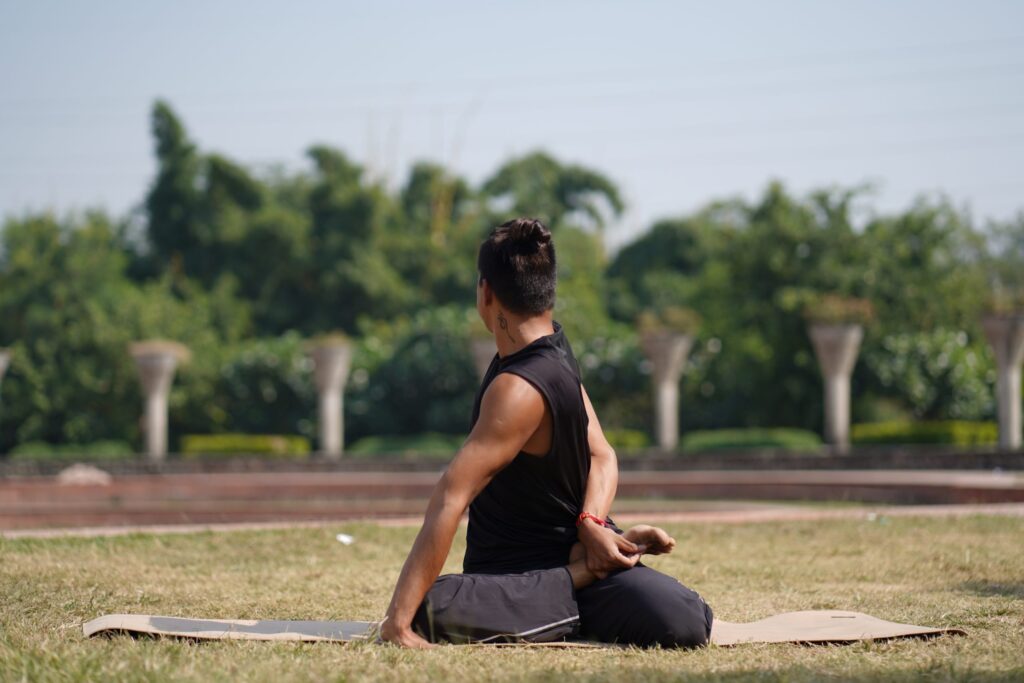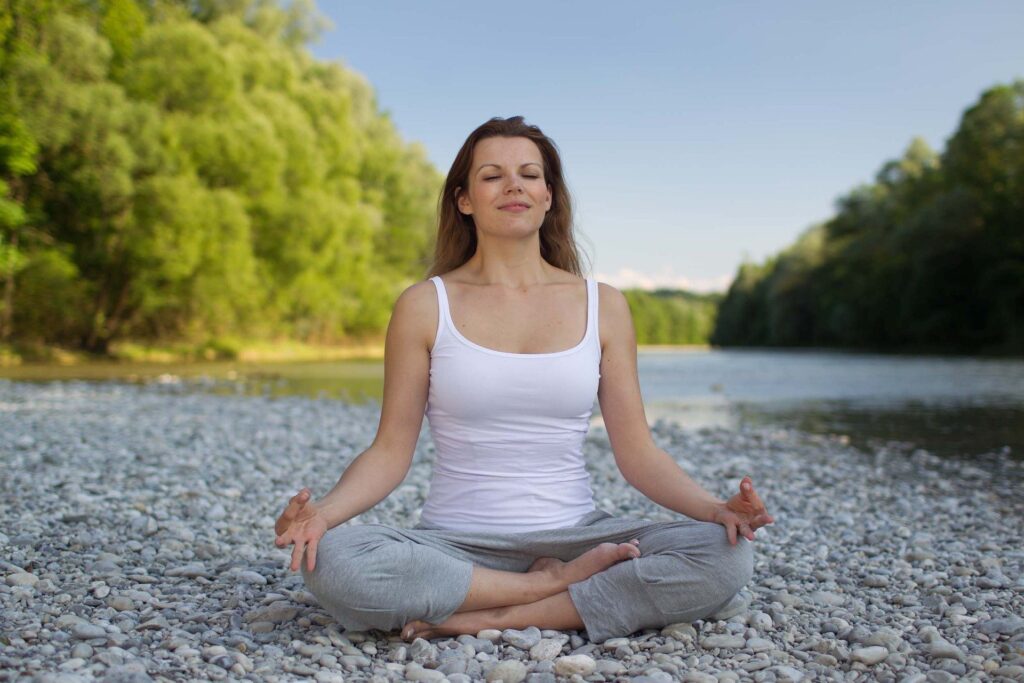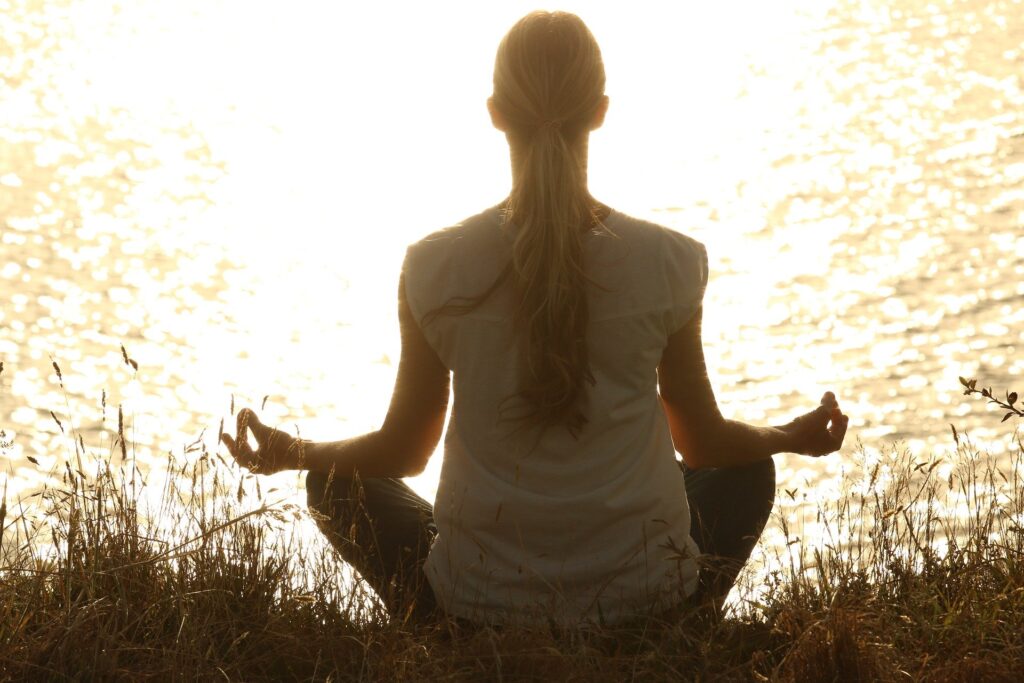Lolasana ( लोलासन ) is also known by different names – Swing Pose or Pendant Pose. This asana is a part of Ashtanga Yoga that promotes a healthy mind-body coordination and provides great stretching of back, biceps, triceps, quadriceps, calves, groins etc. Here, we’ll discuss various such health benefits, steps and precautions for performing ‘Lolasana‘.
A Sanskrit name ‘Lolasana’ is the combination of two words Lol ( लोल ) means ‘Dangling‘ or ‘Swinging‘ and Asana ( आसन ) means ‘posture or seat’. In this asana, a yogi need to balance his body weight on his palms by lifting hips off the ground and legs rocking front and back. Meanwhile, knees remain together near elbows or abdominal muscles.
Lolasana is an ancient yoga asana that is mentioned in Indian texts such as Vyayama Dipika that help to develop strong arms and core muscles. During its practice, body remains swinging in the air and being supported by the hand like ‘a hanging pendant‘.
The Pendent Pose is an arm balancing asana that not improves arm strength but also develops your focus and concentration. Moreover, it also helps to build power to perform challenging and advance poses by opening the chest, spine, hips & back muscles.
How to practice Lolasana ( The Pendant Pose )
To get the maximum benefits follow the below mentioned step – by – step guide to perform Lolasana (The Pendant Pose) :
Padma Lolasana, Utpluthi Lolasana, Tittibhasana and Tulasana are some major variations of Lolasana or The Pendent Pose.
Step 1 :
- Begin the pose with Vajrasana, pressing knees and feet firmly towards the ground.
Step 2 :
- Place your palms on the floor by the side of your thighs, just outside of your knees.
Step 3 :
- Spread your fingers equally and lift your knees off the floor with a deep exhalation.
Step 4 :
- Put your body weight into your palms and engage thighs, belly, wrists & shoulders.
Step 5 :
- You may use pillow or cushions on which you can place the hands as a modification.
Step 6 :
- Now, keep both knees together close to inner elbows as you balance on your toes.
Step 7 :
- Exhale, lean a bit ahead and swing body backward and forward between the arms.
Step 8 :
- Rest the hips on the abdominal muscles and press your forearms against the thighs.
Step 9 :
- Cross right foot at ankles over the left, hips off the floor to balance on your left toe.
Step 10 :
- Breathe slowly and deeply, gaze at one point on the floor for better concentration.
Step 11 :
- Hold the position for 30 seconds or as per your capacity without straining the body.
Step 12 :
- To come out of the pose, exhale and lower your buttocks and bring the legs down.
Step 13 :
- Assume Dandasana or Vajrasana and take 2-4 breathes to relax yourself completely.
Step 14 :
- Repeat the pose and practice it twice by interchanging the position of crossed legs.
Benefits of Lolasana – The Pendant Pose
The powerful calming effects of Swinging pose makes it easier to hold the body in seated meditation for long.
Following are major Health Benefits of Lolasana – The Pendant Pose that you may attain with regular practice :
1. Lolasana Helps to Strengthen Muscles
- Lolasana is a hand-balancing exercise that strengthens chest, wrists, forearms, back, legs and shoulders.
- Furthermore, Pendent Pose also aids to release stiffness and smoothen the joints, tendons and muscles.
Also Read :
2. Lolasana Helps to Improve Digestion
- Lolasana strengthens and massages abdominal muscles and helpful in curing many stomach disorders.
- This pose removes excess belly fat and supports the optimum secretion of digestive juices and enzymes.
Also Read :
3. Lolasana Stimulates Different Chakras
- Lolasana activates Muladhara and Manipura Chakras that offers a sense of security & emotional stability.
- Apart from this, it also generates self-confidence, self-control, bodily balance, willpower & concentration.
Also Read :
4. Lolasana Treats Respiratory Problems
- Daily practice of Lolasana opens up chest and offers great relief from respiratory problems like bronchitis.
- Plus, it also stimulates energy of your body by deepening breathing and improving the blood circulation.
Also Read :
Precautions and Contraindications
- Avoid practice of Lolasana if you are suffering from high blood pressure, migraine or any heart diseases.
- Avoid doing this asana if you’ve pain or injuries in the neck, back, chest, wrists, ankles hips or shoulders.
- People with inflammation of tendons, slipped disc, prolapse or any kind of hernia must avoid this asana.
- All the women who usually bleed heavily during their menstrual cycle must avoid practicing this asana.
- Women must avoid Lolasana during pregnancy as it puts lot of pressure on abdomen and pelvis region.
Preparatory Poses
- Vajrasana
- Adho Mukha Svanasana
- Padmasana
- Gomukhasana,
- Vasisthasana
- Navasana
- Ubhaya Padangusthasana
- Catur Svanasana
- Phalakasana
- Tolangulasana
Follow Up Poses
- Bakasana
- Kakasana,
- Tulasana
- Kukkutasana,
- Pawanmuktasana,
- Paschimottanasana
- Chaturanga Dandasana
Tips For Beginners
- Lolasana is an advance level yoga asana so always practice some warm-up exercises before you start practicing this asana.
- You can practice Lolasana both in morning and evening with a gap of two hours gap between your meal and your practice.
- If you’ve any medical concerns, consult healthcare provider & practice it under the supervision of an certified yoga teacher.
Conclusion
Lolasana offers numerous health benefits – open arms shoulders, promotes flexibility of back, tons up abdominal muscles, improves core strength, burns high calories, lowers abdominal fat, increases secretion of digestive juices and enzymes etc.
We really hope that this article would be useful guide for your practice of Lolasana aka Pendent Pose. Try out this excellent asana after a long tiring day and do share your views and suggestions on this article in the comment section down below.
Also Read :
Why Lolasana is considered to be one the best exercise for Athletes ?
Lolasana is often considered to be the best yoga asana for sportsperson as it strengthens and stretches elbows, wrists, arms, knees, core muscles. shoulders, gluteus and hip flexors. Plus, it also develops strong upper body for inversions and deeper arm balances exercises that requires greater self control and coordination.
